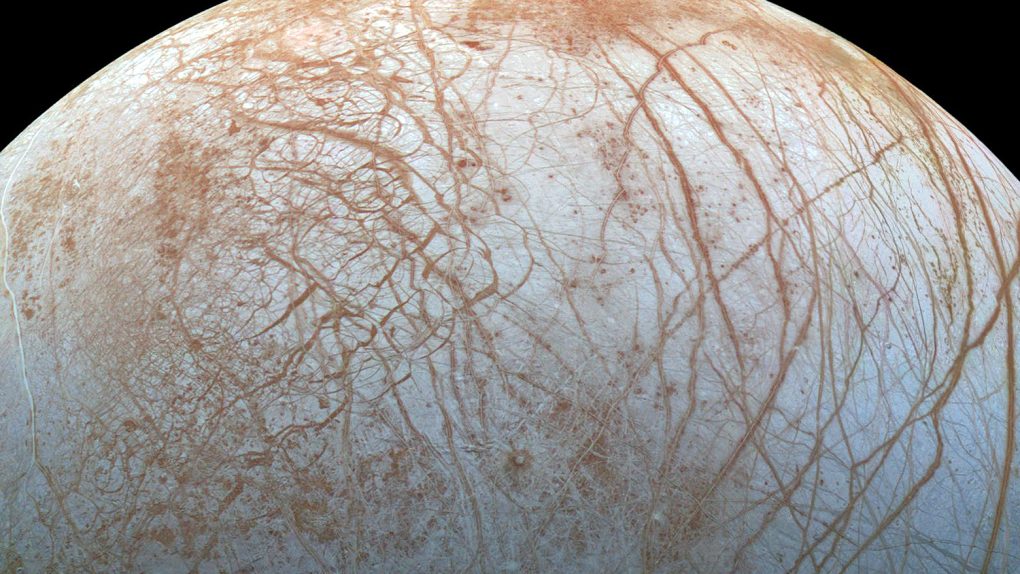If we’re going to find extraterrestrial life inside of our own Solar System there’s only a handful of places where scientists believe we might find it. Of those places, Jupiter’s moon Europa is perhaps the most promising, and the planet’s warm ocean is incredibly tantalizing to researchers. Now, a new report is helping to cement the idea that jets of water spewing from cracks in the planet’s icy shell are a good place to start looking for evidence of life.
The research, which was published in Nature Astronomy, doesn’t hinge on any new observations but instead focuses on data gathered over two decades ago by the Galileo spacecraft. The orbiter had a close encounter with Europa in late 1997, and what at the time was thought to be a strange anomaly in its data is now believed to be evidence that Galileo actually flew through one of Europa’s water plumes.
Looking at Europa’s surface, you might not suspect that the planet could harbor life. However, the thick ice shell that covers the planet has a number of large cracks which reveal what is actually hiding beneath.
Huge fissures in the ice spew its ocean water out into space, kept warm deep under the ice by tidal forces generated by the planet and its host, Jupiter. If researchers want to know if some form of life has indeed taken root inside the planet, studying those plumes may be the easiest way to prove it.
Rather than forming a mission to land on Europa, drill down to where the liquid water hides, and then take samples from there, NASA now hopes that a probe flying through the water plumes could grab some of the material, run tests, and report its findings.
If Galileo already flew within the immediate vicinity of the jets without even trying, NASA could certainly achieve the same feat with a new probe designed to specifically to sample the icy plumes in the hunt for microbial life or some other organic proof that something is alive in Europa’s depths.
The real question is: If we do send a probe there, and if NASA confirms the existence of extraterrestrial life hiding below Europa’s frosty exterior, what will we do next?








